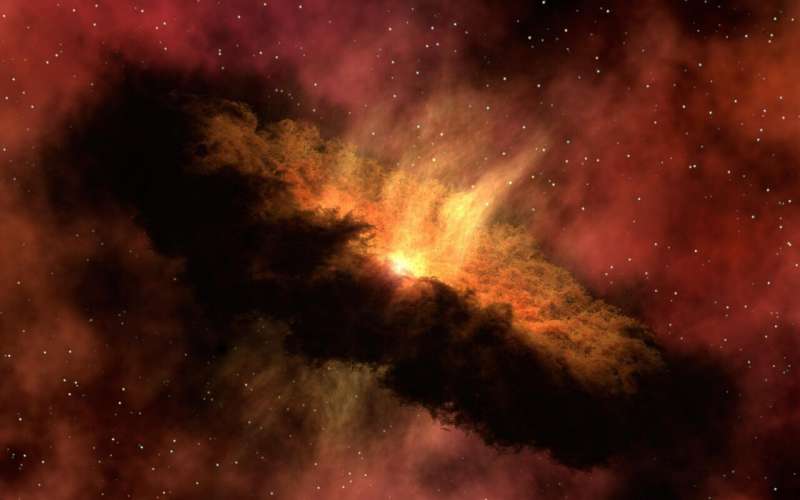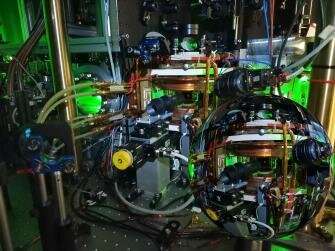November 10, 2022 report
An early universe analog built in a lab in Germany

A team of researchers at Universität Heidelberg has built an early universe analog in their laboratory using chilled potassium atoms. In their paper published in the journal Nature, the group describes their simulator and how it might be used. Silke Weinfurtner, with the University of Nottingham, has published a News & Views piece in the same journal issue outlining the work done by the team in Germany.
Understanding what occurred during the first few moments after the Big Bang is difficult due to the lack of evidence left behind. That leaves astrophysicists with nothing but theory to describe what might have happened. To give credence to their theories, scientists have built models that theoretically represent the conditions being described. In this new effort, the researchers used a new approach to build a physical model in their laboratory to simulate conditions just after the Big Bang.
Beginning with the theory that that the Big Bang gave rise to an expanding universe, the researchers sought to create what they describe as a "quantum field simulator." Since most theories suggest it was likely that the early universe was very cold, near absolute zero, the researchers created an environment that was very cold. They then added potassium atoms to represent the universe they were trying to simulate.
The atoms were chilled to just above absolute zero and slowed down using lasers, resulting in the formation of a Bose-Einstein condensate—a type of superfluid. The researchers then used light from a specially designed projector to push the atoms into desired arrangements. Under the setup, superfluid excitons known as phonons propagate in two directions.

By manipulating the speed of propagation, the researchers were able to mimic theorized wave propagation in the early universe. They suggest the behavior of their superfluid was somewhat similar to the physics that governed spacetime and the production of particles in those moments just after the Big Bang.
One of the first experiments conducted using the simulator involved mimicking the expansion of the early universe—the atoms in the superfluid moved in a ripple pattern in ways similar to what has been predicted by theory if pairs of particles are being created.
More information: Celia Viermann et al, Quantum field simulator for dynamics in curved spacetime, Nature (2022). DOI: 10.1038/s41586-022-05313-9
Silke Weinfurtner, Superfluid system hosts early-Universe dynamics, Nature (2022). DOI: 10.1038/d41586-022-03557-z
Journal information: Nature
© 2022 Science X Network



















